 Facebook
Facebook
 X
X
 Instagram
Instagram
 TikTok
TikTok
 Youtube
Youtube
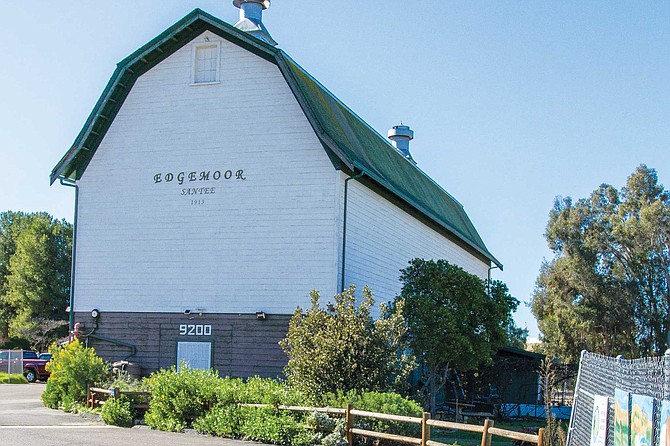
Most people who drive past the old green and white Dutch-style barn on North Magnolia Avenue in Santee, on their way to one of the freeways or to the nearby strip malls, don’t know what secrets it holds. Some long-time residents know that the building is home to the historical society, but before that — more than 100 years ago — it was where the wealthiest people in San Diego came to play and relax.

“In 1913, John H. Dupee, a millionaire from Chicago, purchased a nearly 500-acre farm (for a reported $85,000) for his son, Walter Hamlin Dupee, who lived in Coronado and was rumored to be a playboy of sorts,” said Eloise Dowd of the Santee Historical Society. “Walter bought and sold bulls after finding it difficult to make any money selling milk. One of his first prized bulls sold for $10,000 which is about $250,000 in today’s prices.”
The younger Dupee decided that farming wasn’t enhancing his reputation, so in 1916, he built polo barns near the barn. That’s when the elite of San Diego decided Santee was the place for their country homes.
“They would take the train down from Coronado or San Diego to the station at Coyote Hill, which is now Cameron Mobile Estates on North Magnolia Avenue, and spend the weekend or the winter here,” Dowd said. “Everyone wanted to live in Santee.”
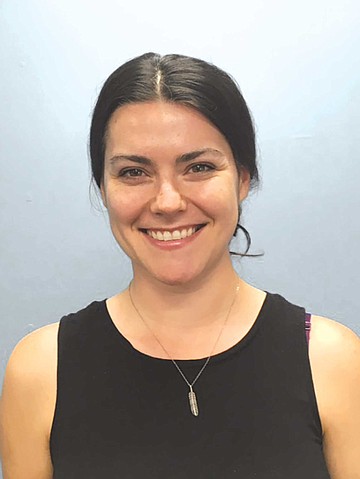
The dairy barn — which in 1986 was added to the National Registry of Historic Places — soon became known as the “Polo Barn,” and was well known throughout San Diego. But in 1923, a flood took out the polo grounds, and Walter’s father, fed up with his married son’s womanizing and spending money on polo ponies, sold the property to Godfrey L. Strobe, a dairy man who turned it around quickly and sold it to the County. The County in turn changed the most famous polo grounds in the county to a “poor farm” for the destitute and a home for mental patients.
The elite quickly fled.
In 1969, my parents and I moved to La Mesa from Poway, and on most Sundays, we would take a drive around East County to check it out. I remember Santee being a lot like Poway back in the day — sparse, with farms, and hills filled with boulders in shades of dirty white. In other words, boring to a 10-year-old. The only good thing about Santee for me on those Sunday drives was at the end, before we drove back up Fanita Road to La Mesa, when we would stop at a little hole-in-the wall burger joint that served delicious milkshakes. I always ordered cherry.
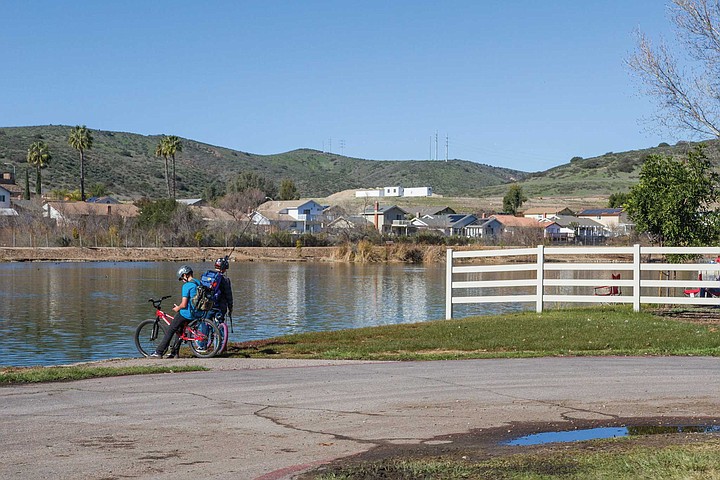
When I turned 16 and got my driver’s license, I would go for joyrides with my friends in my parents’ old Dodge Charger, pretty much all over the county — Julian for apple pie, Ocean Beach and La Jolla for the beach scene. But Santee was never even a thought, because there was nothing to see or do.
The only time anything exciting happened for me in Santee was when I was on a first date and we dropped into my date’s house for a minute, and we walked into a full-on fight between two grown men, complete with blood flying everywhere, in the garage. This, for me was an image of Santee that I continued to have for at least four decades. It was also the only date I went on with the Santee boy.
A few years ago, when my late husband Ralph and I were living and traveling in our RV, his cousin Cissy Walters suggested we come back to San Diego and stay in the Santee Lakes Campground. She had recently bought a home within walking distance of the lakes. I didn’t remember that Santee had lakes, and a campground in this particular suburb didn’t sound enticing, so I Googled the venue. I was surprised by photos of the lakes and the amenities. We had mostly stayed in modest campgrounds during our travels, and a few were on the dodgy side. This one, if as good as advertised, was better than any campground we had ever stayed in for any length of time.
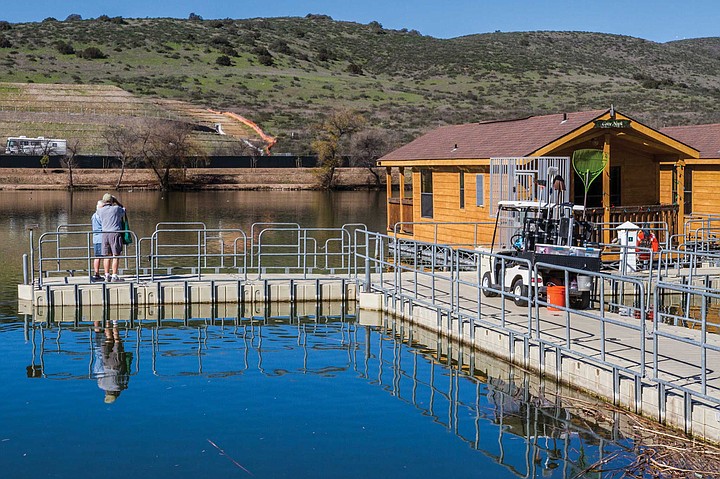
The campsites were large and mostly under large shade trees that filled the back half of the 190-acre park. Coyotes howled at night, and even though we could see the rooftops of houses both old and under construction, it felt like we were camping in a state park. The other RV folks were from all over the country and the world and in the evenings, we would hang out in the hot tub with plastic cups of wine, trade travel stories, and watch the dreamy sunsets bursting with pink, purple, and orange. Many stayed all winter, and others stayed year-round. It was hard to get a site because Santee Lakes was so popular and known around the country, so if you stayed more than a week or two, you might have to move your rig to another site, an exercise known to the other campers as “doing the Santee shuffle.”
We filled our days hiking around the seven lakes, which use recycled water and are maintained by the Padre Dam Municipal Water District, or hanging out under a tree reading or writing. Ralph would head to town on his bike and ride one of the trails to Lakeside and beyond. Sometimes, Cissy would come to visit from her nearby home to watch the birds — over 200 species of birds either live around or pass through the lakes, depending on the season. For Cissy, moving back to Santee was coming home. Her family — much like Ralph’s grandparents and other relatives — were originally from Friesland in the north of the Netherlands and became dairy farmers throughout San Diego County.
Cissy’s family — the Broersmas — bought 18 acres in 1943 on the corner of Mission Gorge and Fanita Road, built a barn, and later bought cows. Their farm was big — with three houses on the back property for the milkers who cared for the roughly 180 cows.
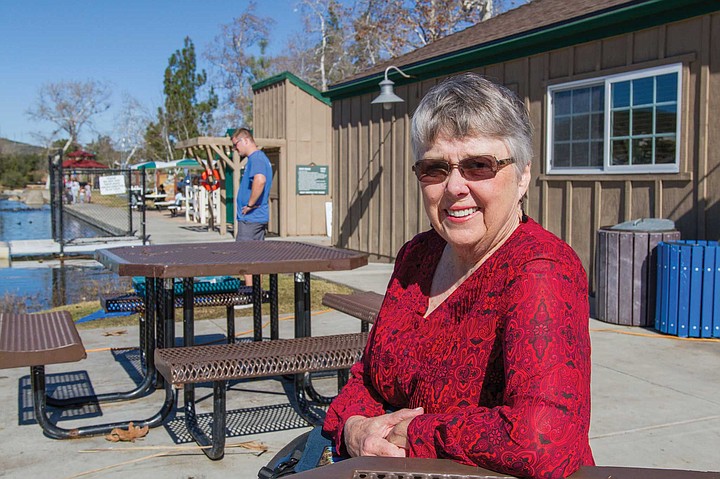
“I loved living on the ranch,” Cissy said. “I remember that on some occasions I got to ride my horse to school. I was in 4-H and I loved everything about living in Santee.”
She later moved out of San Diego, but came back and bought homes in El Cajon and La Mesa, and retired from Rio Seco Elementary School in Santee in 1998 as the school secretary. In 2016, she bought a home near Santee Lakes.
“I’ve come full circle and feel like I’ve come back home,” she said. “I love the wildlife, and I can hear the birds almost any time of the day. Santee is a wonderful place to live.”
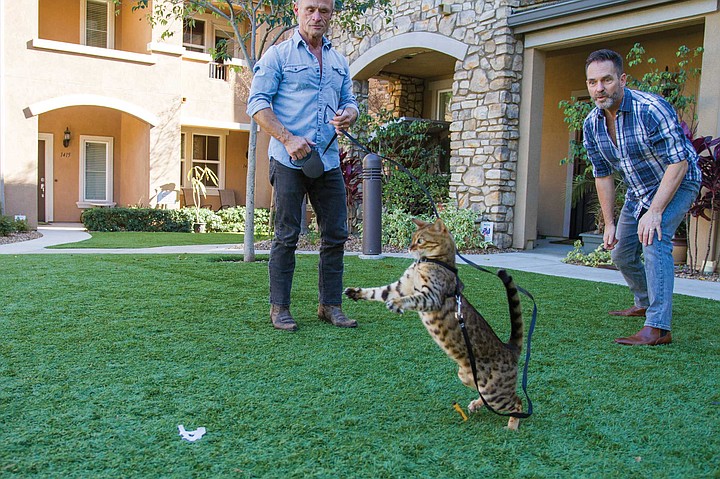
For Ralph and me, it was a good few months at the lakes, and we only moved when our RV developed a small brake leak and we were asked to leave until we fixed it. I never thought we could get booted from a campground, but Santee Lakes is serious about their water, as they should be. We moved to the beach after that experience.
While we were camping in Santee, our daughter and her husband found a condo nearby to rent, and our son-in-law’s brother and his family moved to Santee. It reminds them of Simi Valley, where they grew up. They’ve all had babies since then and are already looking at buying houses in Santee. As good parents do, they’re checking out the schools, which are highly rated. Some of the elementary schools, such as Rio Seco Elementary, have waiting lists.
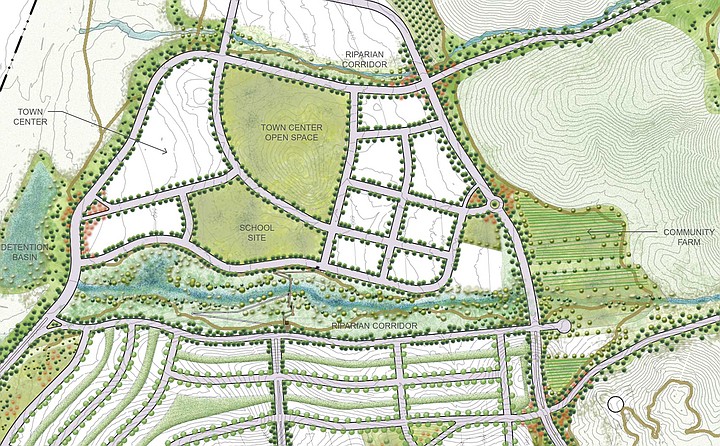
Everyone, it seems, wants to live in Santee, although the community went through some rough patches. For a while, Santee was nicknamed “Klantee” because of the white power and skinhead activity in the area, and “Santucky” for its large number of lifted pick-ups, RVs in driveways, and Confederate flags. (I even saw some at the Santee Lakes campsites, which made me furious.)
The biggest black-eye to the community came on on March 5, 2001, at Santana High School when Charles Andrew “Andy” Williams shot and killed two students and wounded 13 others after he said he was bullied. Currently, he is serving 25 years in the California State Prison System.
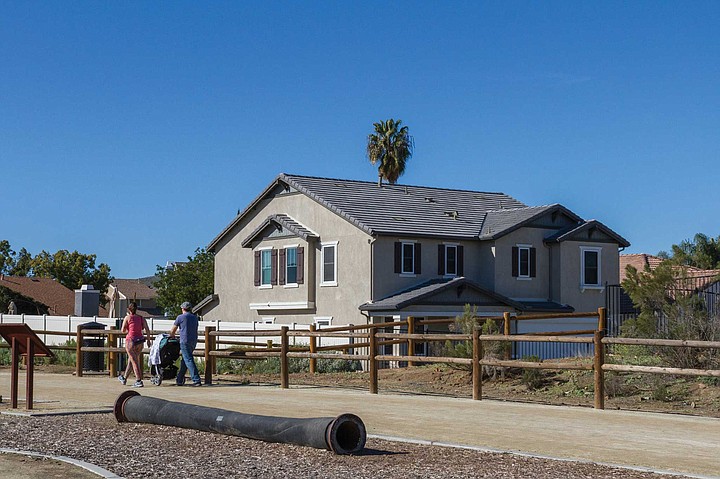
In 2010, a white Santee resident who had two African-American children was attacked by 15-year-old suspected of being in a gang named the “Peckerwoods.” The youngster hit the man over the head with his skateboard, requiring the victim to get 17 stitches. The teenager’s father — also a member of the gang — was convicted in 1998 for crippling an African-American Marine who later died from his injuries.
In 2014, the Santee School District offered to pay a black woman to drive her children to another school district after she complained about racial harassment at Cajon Park Elementary School. The children were bullied and had oranges thrown at them, and a teacher made fun of them during Black History Month.
Isolated incidents like these aside, Santee seems to have changed from a dusty farm town with a race-relations problem to a sprawling suburbia set against the backdrop of the desert-like setting now filling up with McMansions and a growing diversity.
I was recently surprised to find that a classmate from Grossmont High School, Don Adams, lives in Santee. “Rob and I bought our townhouse in Santee in 2009,” he told me. “We had been living in a small 1930’s Spanish duplex near Balboa Park since returning to San Diego in 1998. I had been living in San Francisco, and Rob was living in Toronto, when the Old Globe asked us both to work on the world premiere of How the Grinch Stole Christmas. I was the production stage manager and Rob was cast as one of the leads. The show was a huge success and so was our relationship. We both ended up staying at the Old Globe and our tiny duplex until 2009, when we thought to ourselves, ‘Since we were sticking around maybe we should try and buy something.’ We looked around Hillcrest and quickly decided that we didn’t want to live in any place we couldn’t afford. All we could find in our price range were two-bedroom condo conversions with a washer dryer combo in the hall closet, no insulation, and no garage. On a lark one afternoon, I decided to take a look around East County where I had grown up. It seemed like a million miles from civilization, but we could afford three bedrooms with three and a half baths and a two car garage, and it was brand new construction. It seemed like they were building new houses and condos everywhere in East County. They were tearing down the trailer parks and chicken ranches I remembered from my childhood and replacing them with really nice homes. We thought it was going to be a difficult transition and that we would miss the cosmopolitan feel of Hillcrest and Downtown, but it wasn’t. We quickly realized that with the addition of the 52 freeway and the 125, it was an easy 20 or 30-minute commute anywhere. Rob works now at the UCSD School of Medicine, and it’s a 25-minute commute door to door. We worried at first that a gay couple might not be welcomed in the suburbs and joked that we’d be attacked by savages like other pilgrims before us. The fact is, we love our neighbors and they have been exceptionally welcoming to us. We actually know more of our neighbors here in Santee than we ever did in Hillcrest. They have us to their houses for dinner and we invite them to ours. Our neighbors have keys to our place and look in on our cat for us when we are gone. We have keys to three of our neighbors’ places in case of emergency or if they get locked out.
“We love living at the foot of Cowles Mountain with Mission Trails Park in our front yard. We love that we have everything we need nearby, and we don’t drive around looking for parking and get pan-handled by homeless people constantly. As for politics, don’t get me started. We’ve got some work to do. Duncan Hunter was just re-elected in our district and the city council seems more than willing to turn open spaces into Kwiki Marts and Gas Stations for the tax revenue in an effort to make up for their lack of budget management.”
Although many other residents complain about the homeless, Adams has lived in other parts of San Diego where the problem is severe. San Diego County had the fourth-largest homeless population in the nation last year – 9100 homeless people throughout the county. The 2018 Point in Time “We all Count” report on homelessness in the region revealed that 12.7 percent of San Diego County’s homeless population is in East County, with Santee having 46 homeless people. All of them are unsheltered.
“I like Santee, it has some good places to sleep,” said Martin Blaine, a homeless veteran originally from New Jersey who takes the trolley from San Diego to Santee when the spirit moves him. “There’s more places to get food and services downtown, and honestly, people don’t expect to see homeless guys here in the nice towns. I lay low when I come to Santee and stay out of trouble. It’s kind of like a vacation.”
People such as Blaine might start having a harder time finding open spaces to sleep if HomeFed Corporation has its way. HomeFed is a Carlsbad-based company that has been trying to convince Santee for more than a decade that developing a housing community of 3000 homes on almost 3000 acres on the northwestern side of the city is a good idea. The previous project had been approved by Santee City Council in 2007, but the San Diego Superior Court and the fourth District Court of Appeals ruled against the city’s decision, citing inadequate consideration given to fire safety, water supply and other environmental issues. The plan includes “15 parks, 35 acres of community farm professionally run that will produce enough food for the 3000 units. Also a farmers market, 80,000 square feet of retail, a small grocery store similar to Trader Joe’s, farm-to-table restaurants, a K-8 school, solar farm, an RV parking lot and 35 miles of trails throughout the community. The plan includes 75 percent open space with vineyards and orchards and one 35-acre community park. The price tag for these new homes will be from $400,000 up to a million dollars.”
Sometimes I hike the Walker Preserve Trail —a mile-and-a-half trail between Magnolia and Lakeside Avenues alongside the San Diego River — with my elementary school friend Cheryl Harper, a long-time Santee resident. We’ve watched new homes being built near her neighborhood. The houses — built by KB Homes — started at $699,990 and went up from there. They almost all sold out within a few months, and from the looks of the people watering their lawns and pulling up into their driveways in Audis and other high-end cars, the average age is late-thirties. Neither one of us can figure out where the money is coming from to buy these new homes.
“We were very young when we moved to Santee in 1987 and we had to struggle in the beginning since we had two young girls,” she said. “We came here because one of my brothers lived here, and we thought the schools and the neighborhood were safe. For the most part, it has been safe. We love it. We are both runners, and the trails have been such a part of our lives. Now that Walker Trail is right in our backyard, and we have a lot of grandkids here in Santee, it would be hard to ever leave.”


Most people who drive past the old green and white Dutch-style barn on North Magnolia Avenue in Santee, on their way to one of the freeways or to the nearby strip malls, don’t know what secrets it holds. Some long-time residents know that the building is home to the historical society, but before that — more than 100 years ago — it was where the wealthiest people in San Diego came to play and relax.

“In 1913, John H. Dupee, a millionaire from Chicago, purchased a nearly 500-acre farm (for a reported $85,000) for his son, Walter Hamlin Dupee, who lived in Coronado and was rumored to be a playboy of sorts,” said Eloise Dowd of the Santee Historical Society. “Walter bought and sold bulls after finding it difficult to make any money selling milk. One of his first prized bulls sold for $10,000 which is about $250,000 in today’s prices.”
The younger Dupee decided that farming wasn’t enhancing his reputation, so in 1916, he built polo barns near the barn. That’s when the elite of San Diego decided Santee was the place for their country homes.
“They would take the train down from Coronado or San Diego to the station at Coyote Hill, which is now Cameron Mobile Estates on North Magnolia Avenue, and spend the weekend or the winter here,” Dowd said. “Everyone wanted to live in Santee.”

The dairy barn — which in 1986 was added to the National Registry of Historic Places — soon became known as the “Polo Barn,” and was well known throughout San Diego. But in 1923, a flood took out the polo grounds, and Walter’s father, fed up with his married son’s womanizing and spending money on polo ponies, sold the property to Godfrey L. Strobe, a dairy man who turned it around quickly and sold it to the County. The County in turn changed the most famous polo grounds in the county to a “poor farm” for the destitute and a home for mental patients.
The elite quickly fled.
In 1969, my parents and I moved to La Mesa from Poway, and on most Sundays, we would take a drive around East County to check it out. I remember Santee being a lot like Poway back in the day — sparse, with farms, and hills filled with boulders in shades of dirty white. In other words, boring to a 10-year-old. The only good thing about Santee for me on those Sunday drives was at the end, before we drove back up Fanita Road to La Mesa, when we would stop at a little hole-in-the wall burger joint that served delicious milkshakes. I always ordered cherry.

When I turned 16 and got my driver’s license, I would go for joyrides with my friends in my parents’ old Dodge Charger, pretty much all over the county — Julian for apple pie, Ocean Beach and La Jolla for the beach scene. But Santee was never even a thought, because there was nothing to see or do.
The only time anything exciting happened for me in Santee was when I was on a first date and we dropped into my date’s house for a minute, and we walked into a full-on fight between two grown men, complete with blood flying everywhere, in the garage. This, for me was an image of Santee that I continued to have for at least four decades. It was also the only date I went on with the Santee boy.
A few years ago, when my late husband Ralph and I were living and traveling in our RV, his cousin Cissy Walters suggested we come back to San Diego and stay in the Santee Lakes Campground. She had recently bought a home within walking distance of the lakes. I didn’t remember that Santee had lakes, and a campground in this particular suburb didn’t sound enticing, so I Googled the venue. I was surprised by photos of the lakes and the amenities. We had mostly stayed in modest campgrounds during our travels, and a few were on the dodgy side. This one, if as good as advertised, was better than any campground we had ever stayed in for any length of time.

The campsites were large and mostly under large shade trees that filled the back half of the 190-acre park. Coyotes howled at night, and even though we could see the rooftops of houses both old and under construction, it felt like we were camping in a state park. The other RV folks were from all over the country and the world and in the evenings, we would hang out in the hot tub with plastic cups of wine, trade travel stories, and watch the dreamy sunsets bursting with pink, purple, and orange. Many stayed all winter, and others stayed year-round. It was hard to get a site because Santee Lakes was so popular and known around the country, so if you stayed more than a week or two, you might have to move your rig to another site, an exercise known to the other campers as “doing the Santee shuffle.”
We filled our days hiking around the seven lakes, which use recycled water and are maintained by the Padre Dam Municipal Water District, or hanging out under a tree reading or writing. Ralph would head to town on his bike and ride one of the trails to Lakeside and beyond. Sometimes, Cissy would come to visit from her nearby home to watch the birds — over 200 species of birds either live around or pass through the lakes, depending on the season. For Cissy, moving back to Santee was coming home. Her family — much like Ralph’s grandparents and other relatives — were originally from Friesland in the north of the Netherlands and became dairy farmers throughout San Diego County.
Cissy’s family — the Broersmas — bought 18 acres in 1943 on the corner of Mission Gorge and Fanita Road, built a barn, and later bought cows. Their farm was big — with three houses on the back property for the milkers who cared for the roughly 180 cows.

“I loved living on the ranch,” Cissy said. “I remember that on some occasions I got to ride my horse to school. I was in 4-H and I loved everything about living in Santee.”
She later moved out of San Diego, but came back and bought homes in El Cajon and La Mesa, and retired from Rio Seco Elementary School in Santee in 1998 as the school secretary. In 2016, she bought a home near Santee Lakes.
“I’ve come full circle and feel like I’ve come back home,” she said. “I love the wildlife, and I can hear the birds almost any time of the day. Santee is a wonderful place to live.”

For Ralph and me, it was a good few months at the lakes, and we only moved when our RV developed a small brake leak and we were asked to leave until we fixed it. I never thought we could get booted from a campground, but Santee Lakes is serious about their water, as they should be. We moved to the beach after that experience.
While we were camping in Santee, our daughter and her husband found a condo nearby to rent, and our son-in-law’s brother and his family moved to Santee. It reminds them of Simi Valley, where they grew up. They’ve all had babies since then and are already looking at buying houses in Santee. As good parents do, they’re checking out the schools, which are highly rated. Some of the elementary schools, such as Rio Seco Elementary, have waiting lists.

Everyone, it seems, wants to live in Santee, although the community went through some rough patches. For a while, Santee was nicknamed “Klantee” because of the white power and skinhead activity in the area, and “Santucky” for its large number of lifted pick-ups, RVs in driveways, and Confederate flags. (I even saw some at the Santee Lakes campsites, which made me furious.)
The biggest black-eye to the community came on on March 5, 2001, at Santana High School when Charles Andrew “Andy” Williams shot and killed two students and wounded 13 others after he said he was bullied. Currently, he is serving 25 years in the California State Prison System.

In 2010, a white Santee resident who had two African-American children was attacked by 15-year-old suspected of being in a gang named the “Peckerwoods.” The youngster hit the man over the head with his skateboard, requiring the victim to get 17 stitches. The teenager’s father — also a member of the gang — was convicted in 1998 for crippling an African-American Marine who later died from his injuries.
In 2014, the Santee School District offered to pay a black woman to drive her children to another school district after she complained about racial harassment at Cajon Park Elementary School. The children were bullied and had oranges thrown at them, and a teacher made fun of them during Black History Month.
Isolated incidents like these aside, Santee seems to have changed from a dusty farm town with a race-relations problem to a sprawling suburbia set against the backdrop of the desert-like setting now filling up with McMansions and a growing diversity.
I was recently surprised to find that a classmate from Grossmont High School, Don Adams, lives in Santee. “Rob and I bought our townhouse in Santee in 2009,” he told me. “We had been living in a small 1930’s Spanish duplex near Balboa Park since returning to San Diego in 1998. I had been living in San Francisco, and Rob was living in Toronto, when the Old Globe asked us both to work on the world premiere of How the Grinch Stole Christmas. I was the production stage manager and Rob was cast as one of the leads. The show was a huge success and so was our relationship. We both ended up staying at the Old Globe and our tiny duplex until 2009, when we thought to ourselves, ‘Since we were sticking around maybe we should try and buy something.’ We looked around Hillcrest and quickly decided that we didn’t want to live in any place we couldn’t afford. All we could find in our price range were two-bedroom condo conversions with a washer dryer combo in the hall closet, no insulation, and no garage. On a lark one afternoon, I decided to take a look around East County where I had grown up. It seemed like a million miles from civilization, but we could afford three bedrooms with three and a half baths and a two car garage, and it was brand new construction. It seemed like they were building new houses and condos everywhere in East County. They were tearing down the trailer parks and chicken ranches I remembered from my childhood and replacing them with really nice homes. We thought it was going to be a difficult transition and that we would miss the cosmopolitan feel of Hillcrest and Downtown, but it wasn’t. We quickly realized that with the addition of the 52 freeway and the 125, it was an easy 20 or 30-minute commute anywhere. Rob works now at the UCSD School of Medicine, and it’s a 25-minute commute door to door. We worried at first that a gay couple might not be welcomed in the suburbs and joked that we’d be attacked by savages like other pilgrims before us. The fact is, we love our neighbors and they have been exceptionally welcoming to us. We actually know more of our neighbors here in Santee than we ever did in Hillcrest. They have us to their houses for dinner and we invite them to ours. Our neighbors have keys to our place and look in on our cat for us when we are gone. We have keys to three of our neighbors’ places in case of emergency or if they get locked out.
“We love living at the foot of Cowles Mountain with Mission Trails Park in our front yard. We love that we have everything we need nearby, and we don’t drive around looking for parking and get pan-handled by homeless people constantly. As for politics, don’t get me started. We’ve got some work to do. Duncan Hunter was just re-elected in our district and the city council seems more than willing to turn open spaces into Kwiki Marts and Gas Stations for the tax revenue in an effort to make up for their lack of budget management.”
Although many other residents complain about the homeless, Adams has lived in other parts of San Diego where the problem is severe. San Diego County had the fourth-largest homeless population in the nation last year – 9100 homeless people throughout the county. The 2018 Point in Time “We all Count” report on homelessness in the region revealed that 12.7 percent of San Diego County’s homeless population is in East County, with Santee having 46 homeless people. All of them are unsheltered.
“I like Santee, it has some good places to sleep,” said Martin Blaine, a homeless veteran originally from New Jersey who takes the trolley from San Diego to Santee when the spirit moves him. “There’s more places to get food and services downtown, and honestly, people don’t expect to see homeless guys here in the nice towns. I lay low when I come to Santee and stay out of trouble. It’s kind of like a vacation.”
People such as Blaine might start having a harder time finding open spaces to sleep if HomeFed Corporation has its way. HomeFed is a Carlsbad-based company that has been trying to convince Santee for more than a decade that developing a housing community of 3000 homes on almost 3000 acres on the northwestern side of the city is a good idea. The previous project had been approved by Santee City Council in 2007, but the San Diego Superior Court and the fourth District Court of Appeals ruled against the city’s decision, citing inadequate consideration given to fire safety, water supply and other environmental issues. The plan includes “15 parks, 35 acres of community farm professionally run that will produce enough food for the 3000 units. Also a farmers market, 80,000 square feet of retail, a small grocery store similar to Trader Joe’s, farm-to-table restaurants, a K-8 school, solar farm, an RV parking lot and 35 miles of trails throughout the community. The plan includes 75 percent open space with vineyards and orchards and one 35-acre community park. The price tag for these new homes will be from $400,000 up to a million dollars.”
Sometimes I hike the Walker Preserve Trail —a mile-and-a-half trail between Magnolia and Lakeside Avenues alongside the San Diego River — with my elementary school friend Cheryl Harper, a long-time Santee resident. We’ve watched new homes being built near her neighborhood. The houses — built by KB Homes — started at $699,990 and went up from there. They almost all sold out within a few months, and from the looks of the people watering their lawns and pulling up into their driveways in Audis and other high-end cars, the average age is late-thirties. Neither one of us can figure out where the money is coming from to buy these new homes.
“We were very young when we moved to Santee in 1987 and we had to struggle in the beginning since we had two young girls,” she said. “We came here because one of my brothers lived here, and we thought the schools and the neighborhood were safe. For the most part, it has been safe. We love it. We are both runners, and the trails have been such a part of our lives. Now that Walker Trail is right in our backyard, and we have a lot of grandkids here in Santee, it would be hard to ever leave.”
Comments